Abstract
Oral amiodarone, an iodine-containing antiarrhythmic agent, was administered to 72 patients with recurrent paroxysmal tachycardias. Thirty-nine patients had tachycardias associated with the Wolff-Parkinson-White syndrome, 15 patients had paroxysmal atrial fibrillation unassociated with the Wolff-Parkinson-White syndrome, and 18 patients had ventricular tachycardia. In all patients, the frequency of symptomatic attacks had not been reduced by at least three other antiarrhythmic agents alone or in combination. The response to amiodarone treatment was graded according to the patients' subjective response (total suppression, partial suppression, and no effect). Overall, 57 per cent of patients had total abolition of attacks and another 22 per cent had a partial suppression of attacks. Side effects, the most common of which were photosensitivity and gastrointestinal upsets, occurred in 44 per cent and were sufficiently severe to warrant withdrawal of treatment in 15 per cent. These results confirm that amiodarone is of considerable value in the treatment of recurrent paroxysmal arrhythmias resistant to other drugs.
Full text
PDF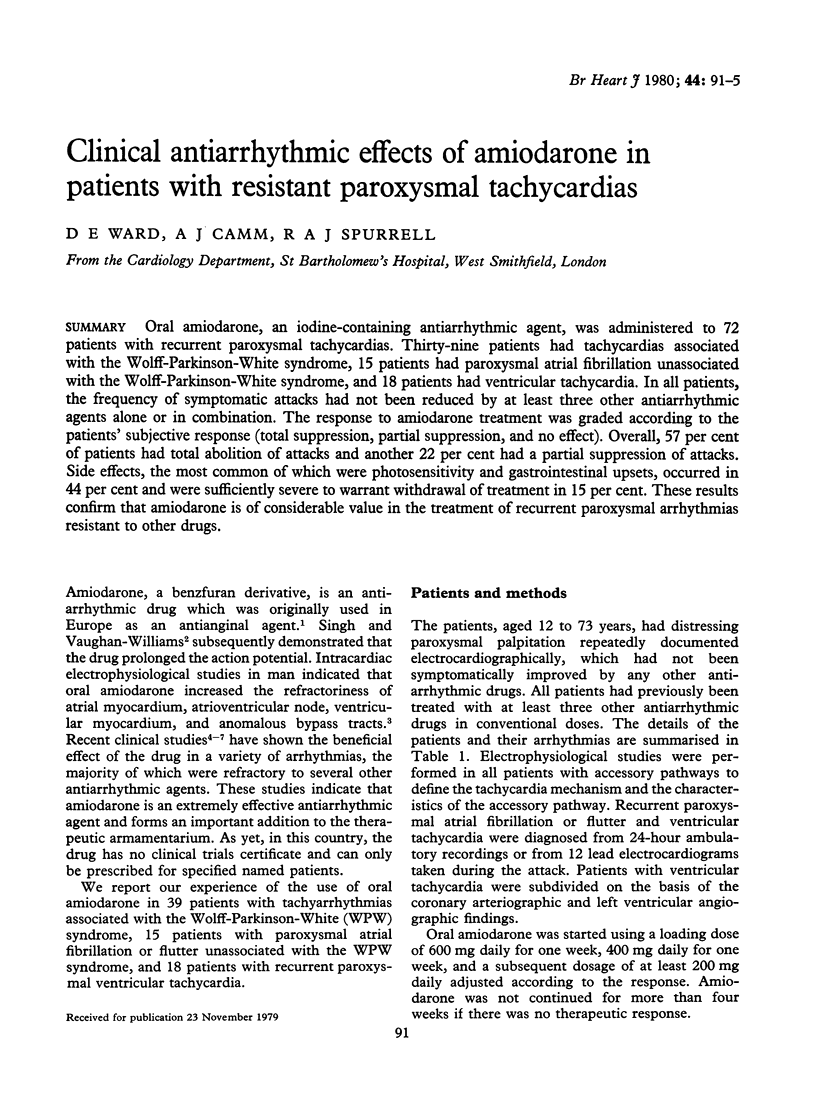
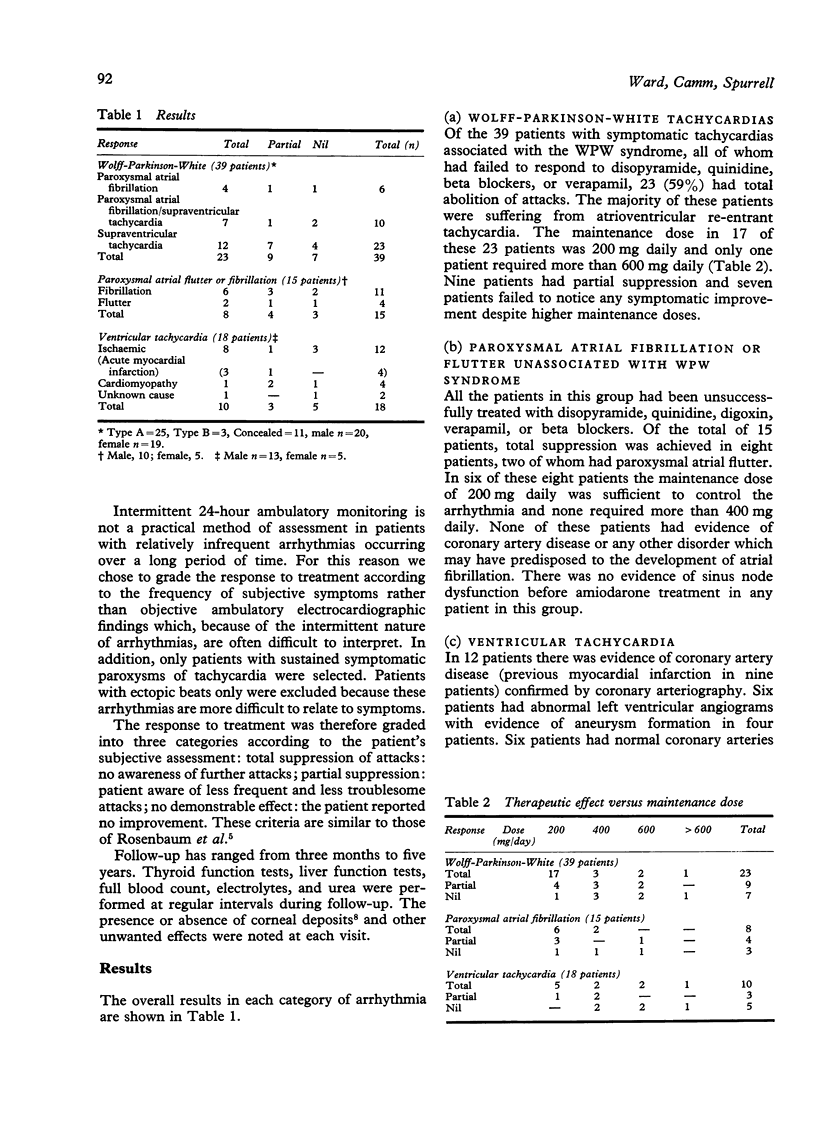
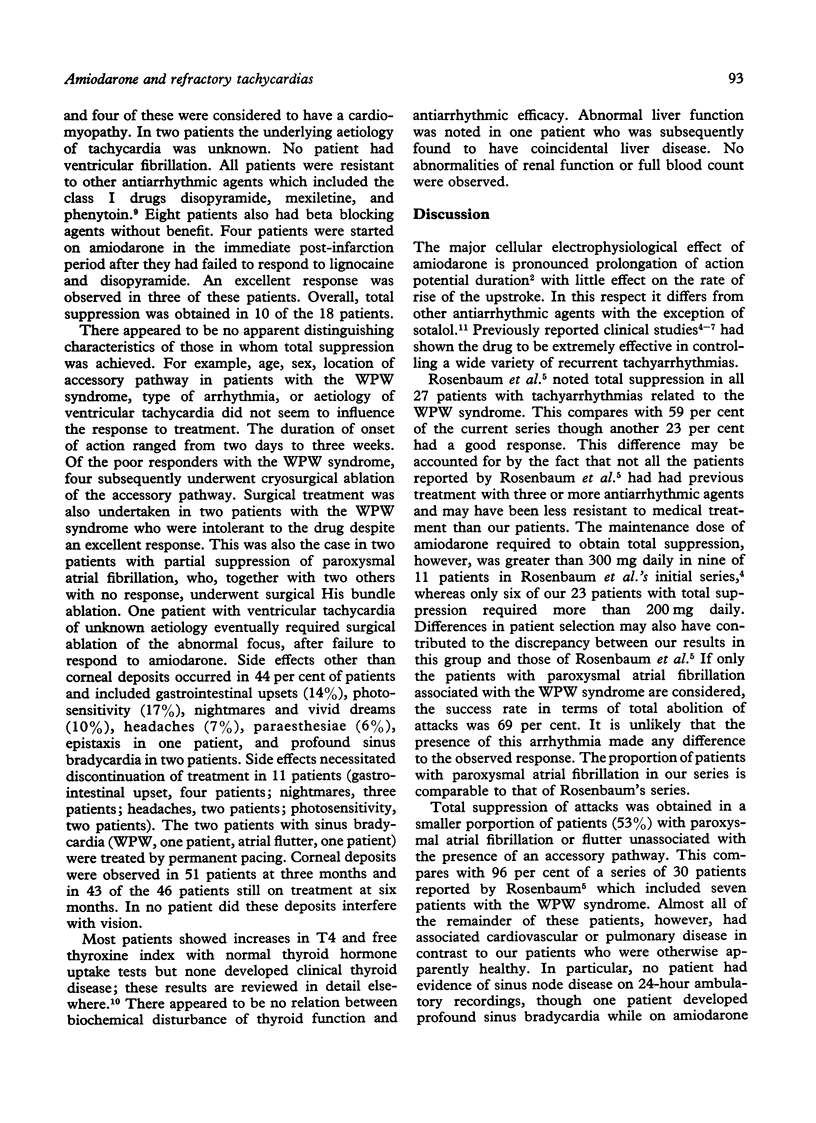
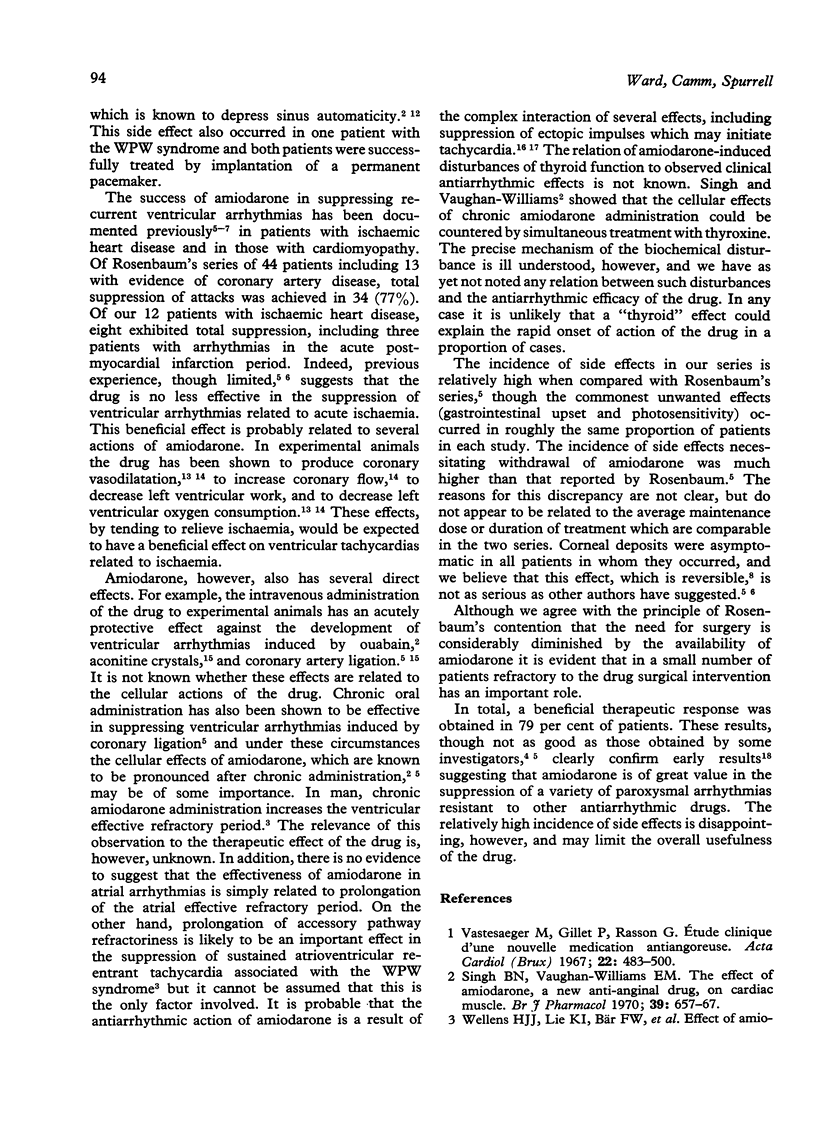
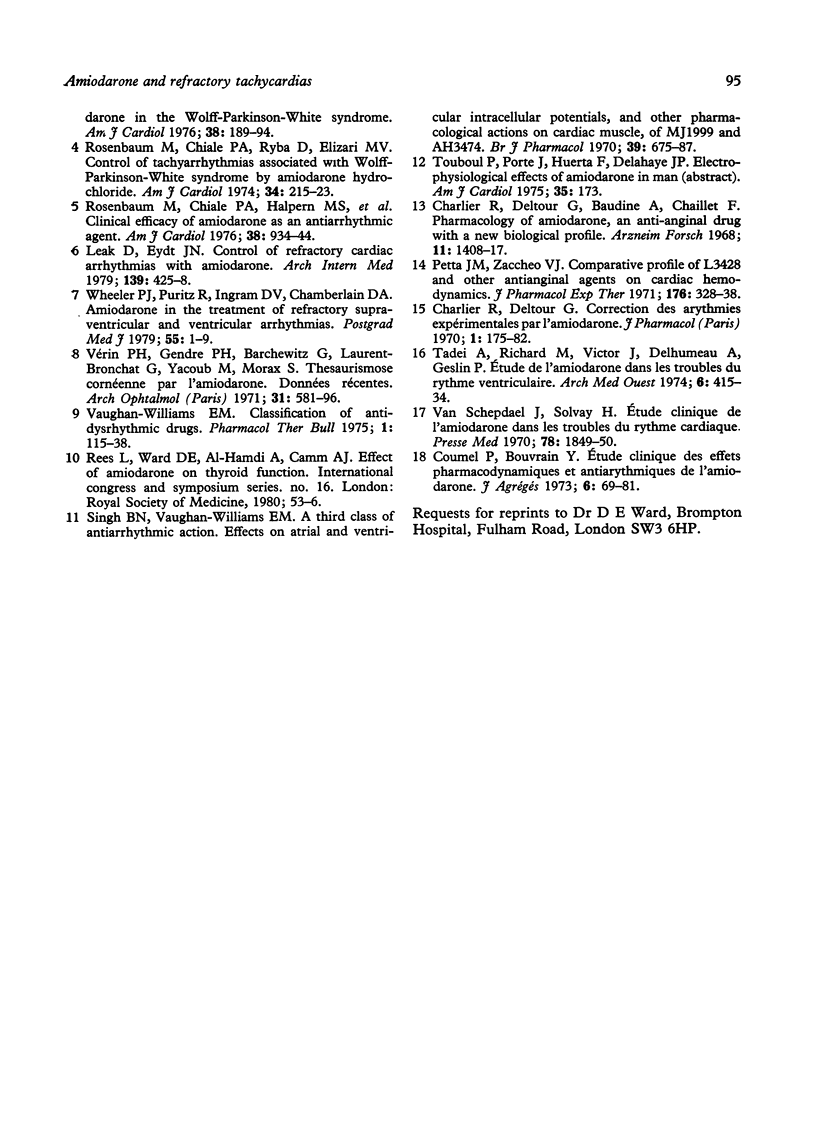
Selected References
These references are in PubMed. This may not be the complete list of references from this article.
- Charlier R., Deltour G., Baudine A., Chaillet F. Pharmacology of amiodarone, and anti-anginal drug with a new biological profile. Arzneimittelforschung. 1968 Nov;18(11):1408–1417. [PubMed] [Google Scholar]
- Leak D., Eydt J. N. Control of refractory cardiac arrhythmias with amiodarone. Arch Intern Med. 1979 Apr;139(4):425–428. [PubMed] [Google Scholar]
- Petta J. M., Zaccheo V. J. Comparative profile of L 3428 and other antianginal agents on cardiac hemodynamics. J Pharmacol Exp Ther. 1971 Feb;176(2):328–338. [PubMed] [Google Scholar]
- Rosenbaum M. B., Chiale P. A., Halpern M. S., Nau G. J., Przybylski J., Levi R. J., Lázzari J. O., Elizari M. V. Clinical efficacy of amiodarone as an antiarrhythmic agent. Am J Cardiol. 1976 Dec;38(7):934–944. doi: 10.1016/0002-9149(76)90807-9. [DOI] [PubMed] [Google Scholar]
- Rosenbaum M. B., Chiale P. A., Ryba D., Elizari M. V. Control of tachyarrhythmias associated with Wolff-Parkinson-White syndrome by amiodarone hydrochloride. Am J Cardiol. 1974 Aug;34(2):215–223. doi: 10.1016/0002-9149(74)90200-8. [DOI] [PubMed] [Google Scholar]
- Singh B. N., Vaughan Williams E. M. A third class of anti-arrhythmic action. Effects on atrial and ventricular intracellular potentials, and other pharmacological actions on cardiac muscle, of MJ 1999 and AH 3474. Br J Pharmacol. 1970 Aug;39(4):675–687. doi: 10.1111/j.1476-5381.1970.tb09893.x. [DOI] [PMC free article] [PubMed] [Google Scholar]
- Singh B. N., Vaughan Williams E. M. The effect of amiodarone, a new anti-anginal drug, on cardiac muscle. Br J Pharmacol. 1970 Aug;39(4):657–667. doi: 10.1111/j.1476-5381.1970.tb09891.x. [DOI] [PMC free article] [PubMed] [Google Scholar]
- Van Schepdael J., Solvay H. Etude clinique de l'amiodarone dans les troubles du rythme cardiaque. Presse Med. 1970 Oct 10;78(42):1849–1850. [PubMed] [Google Scholar]
- Vaughan Williams E. M. Classification of antidysrhythmic drugs. Pharmacol Ther B. 1975;1(1):115–138. doi: 10.1016/0306-039x(75)90019-7. [DOI] [PubMed] [Google Scholar]
- Vérin P., Gendre P., Barchewitz G., Laurent-Bronchat G., Yacoubi M., Morax S. Thésaurismose cornèenne par amiodarone. Données récentes. Arch Ophtalmol Rev Gen Ophtalmol. 1971 Aug-Sep;31(8):581–596. [PubMed] [Google Scholar]


